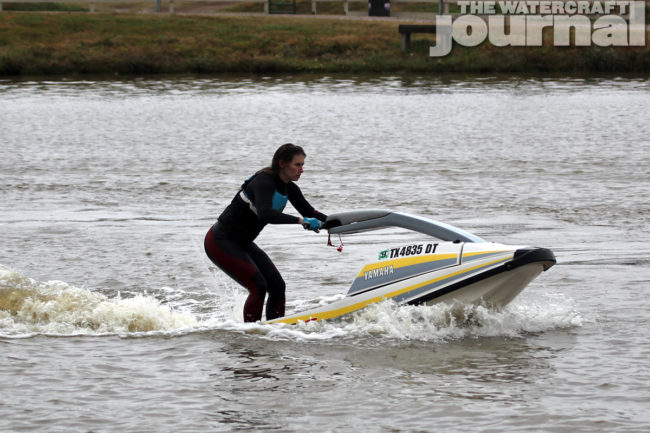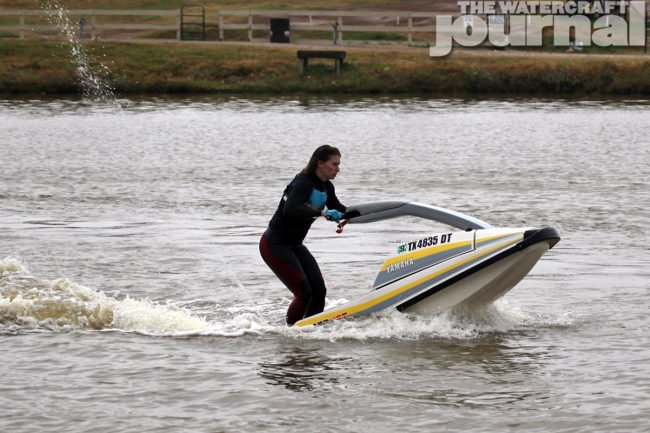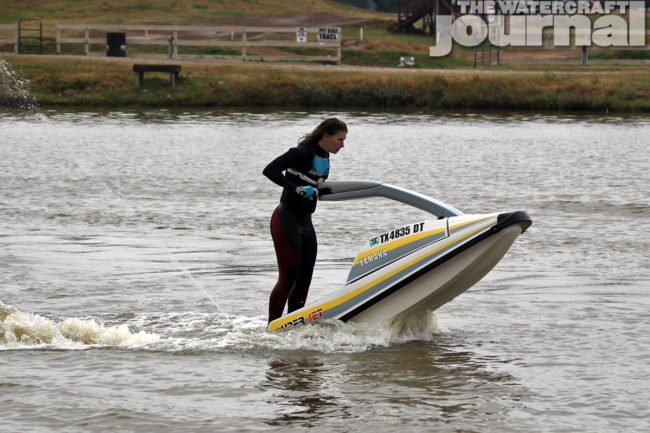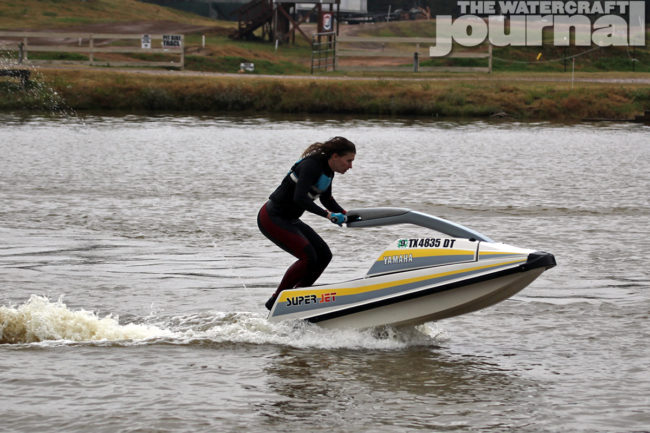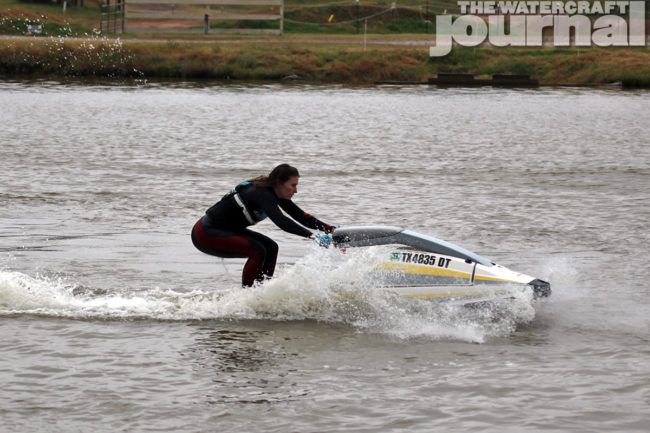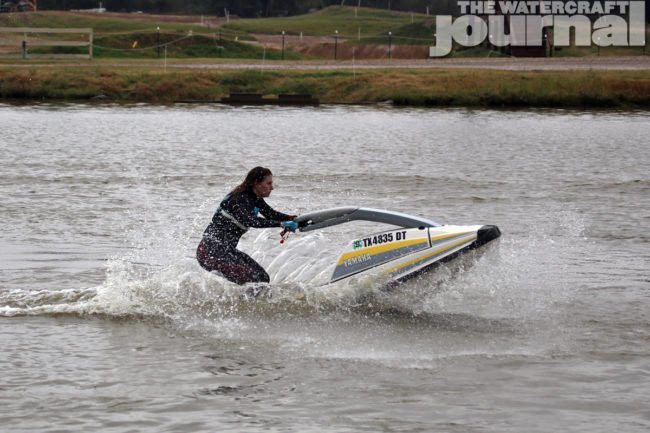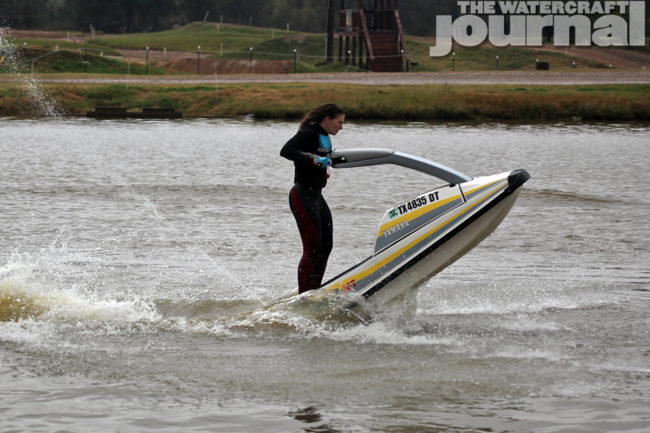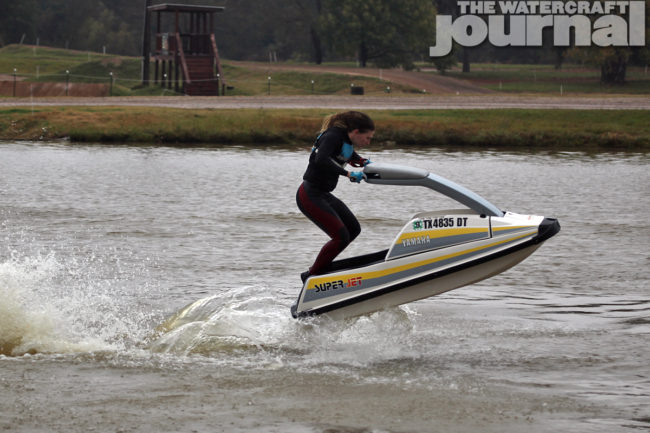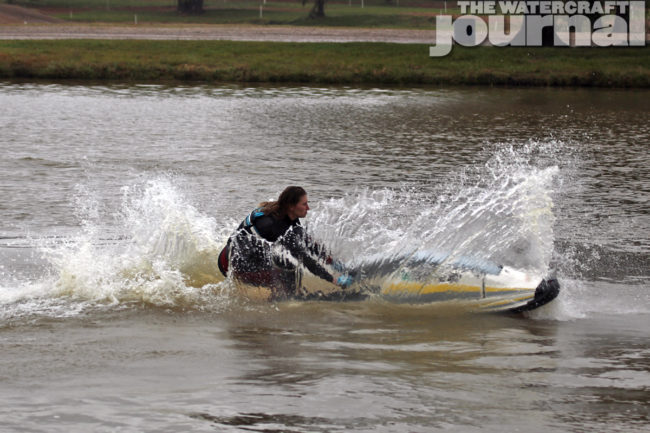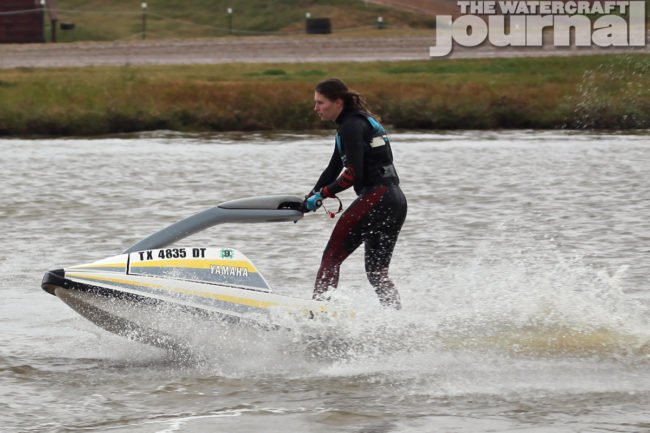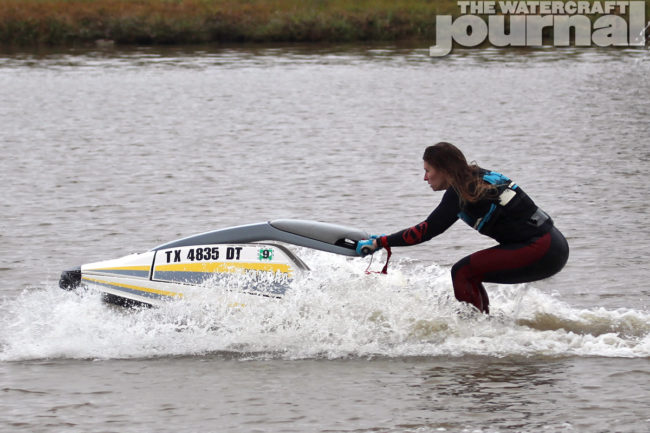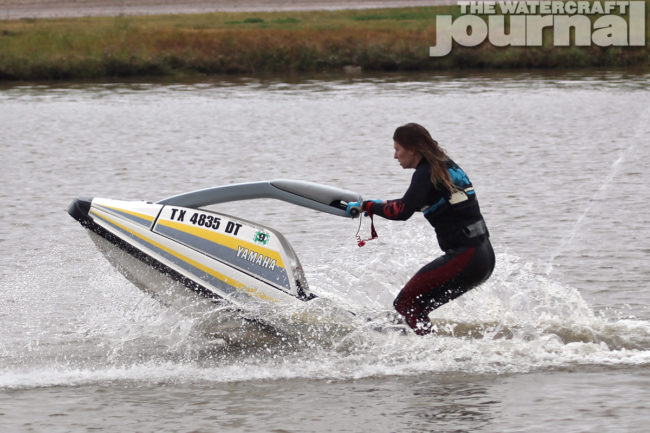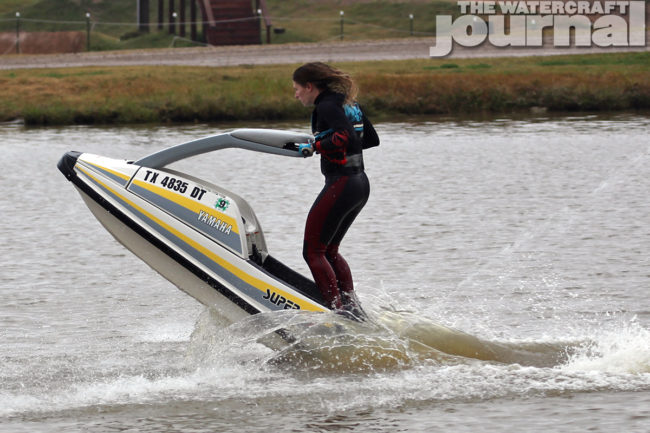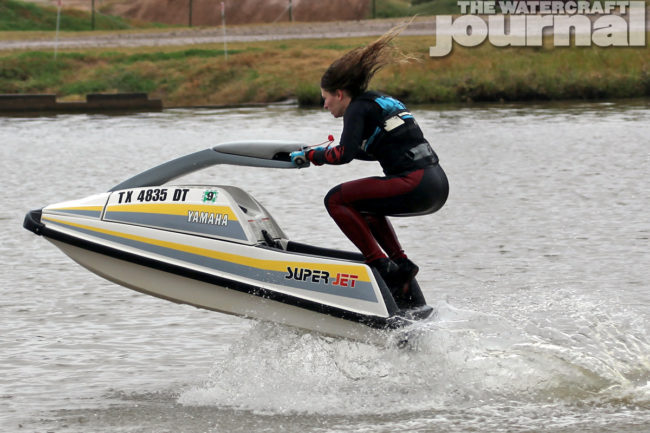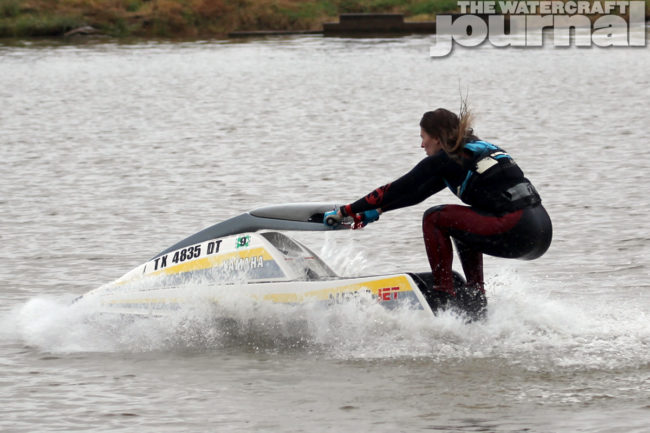
The Bunny Hop is a fan favorite! Fortunately, the bunny hop is a simple skill to learn and the base for future, more complicated tricks.
Breaking it Down
Try to find a smooth spot to try your first hop. This way you can get the feel of how your ski pivots and launches into the air without the aid of a set up wake or lake chop. You can use a set up wake or random wave if you don’t have access to smooth water, but your timing will be based on the wave approaching your ski rather than just your body language.
Start out moving in a straight line and low-mid throttle, I would guesstimate 10-15 mph or so. Enough speed for the ski to plane with no low-speed wobble. Once you are comfortable moving in your line, place both of your feet side-by-side at the back of the tray as far back as you feel comfortable. The farther back the better to initiate the hop.
Apply pressure with your feet toward the outside of the tray on each side, this will help ‘lock’ you in with your ski as you bunny hop and not just jump off of your tray without your ski moving with you. You can also have a quazi-hop where your feet are not quite locked in enough and they hover inches over the tray as you and you ski arc through the air. The more outward side pressure you apply the better you will be able to control the rear of the ski.
Once your feet are set up at the back of the tray and pressing out, it is time to initiate your hop. These steps will happen in quick succession.
Pre-Hop to Full Hop
One technique that helps gain more air is the pre-hop. This ancillary action adds a bit more complexity to body motion. The pre-hop is a less exaggerated version of the actual hop out of the water. It is not necessary, but the pre-hop helps to gain momentum, and therefore more air.
- Let off the throttle some to allow the back of the ski to drop into the water and the nose to come up a bit.
- For the pre hop: blip the throttle enough to lift the nose, but not have the whole ski come out of the water.
- Bob your body up and down in quick succession – push your legs down when you blip the throttle to bring up the nose, pull back toward your body with the bars to further bring up the nose if you have an underpowered ski, pull up with your legs while bending your knees to bring up the rear, push forward/down on the bars with your arms to rock the front of the hull downward. This is the porpoise motion some of you might be familiar with from learning to ride on older hulls.
- Once the hull is at the trough of the pre-hop ‘wave’ with the nose beginning to rise again, the actual bunny hop with will need the application of more throttle and more exaggerated body movement steps above.
- As the nose rises from the pre-hop to start the jump out of the water, heavier application of throttle allows the jet of water to propel you up and forward. The amount of throttle will depend on how much power you have. Some skis need full throttle, some need half, etc.
- Once in the air, while using the outward pressure, retract your legs toward your body to bring the back of the ski up and drop your upper body downward. Keep your elbows and pole up, with the momentum of your upper body coming down push the energy through the bars/pole to push the nose of the ski back toward the water.
- Depending on height of hop you can extend your legs to absorb the impact when returning to the surface of the water or stay in a semi-crouched position. Never fully straighten your legs, keep a little bend of the knee.
- Complete the hop and keep the ski planning by adding in throttle once the hull touches the water.
Things to Consider
The length, weight, and power of your ski will make a difference in timing and power application for your hop. The longer and heavier the hull, more preload, power, and body English will be necessary to pop it out of the water.
Choppy water adds complexity to the hop timing, but natural lake waves can provide a great launch point. For the best skill foundation try to learn the bunny hop on flat water with only the power of your ski to launch you into the air, then progress to using waves or set up wake if you want.
Congratulations on learning a skill that will be the basis for many more complex tricks to come!




